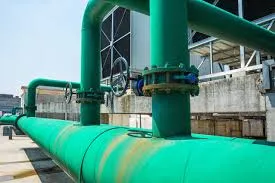
-
 Afrikaans
Afrikaans -
 Albanian
Albanian -
 Amharic
Amharic -
 Arabic
Arabic -
 Armenian
Armenian -
 Azerbaijani
Azerbaijani -
 Basque
Basque -
 Belarusian
Belarusian -
 Bengali
Bengali -
 Bosnian
Bosnian -
 Bulgarian
Bulgarian -
 Catalan
Catalan -
 Cebuano
Cebuano -
 China
China -
 China (Taiwan)
China (Taiwan) -
 Corsican
Corsican -
 Croatian
Croatian -
 Czech
Czech -
 Danish
Danish -
 Dutch
Dutch -
 English
English -
 Esperanto
Esperanto -
 Estonian
Estonian -
 Finnish
Finnish -
 French
French -
 Frisian
Frisian -
 Galician
Galician -
 Georgian
Georgian -
 German
German -
 Greek
Greek -
 Gujarati
Gujarati -
 Haitian Creole
Haitian Creole -
 hausa
hausa -
 hawaiian
hawaiian -
 Hebrew
Hebrew -
 Hindi
Hindi -
 Miao
Miao -
 Hungarian
Hungarian -
 Icelandic
Icelandic -
 igbo
igbo -
 Indonesian
Indonesian -
 irish
irish -
 Italian
Italian -
 Japanese
Japanese -
 Javanese
Javanese -
 Kannada
Kannada -
 kazakh
kazakh -
 Khmer
Khmer -
 Rwandese
Rwandese -
 Korean
Korean -
 Kurdish
Kurdish -
 Kyrgyz
Kyrgyz -
 Lao
Lao -
 Latin
Latin -
 Latvian
Latvian -
 Lithuanian
Lithuanian -
 Luxembourgish
Luxembourgish -
 Macedonian
Macedonian -
 Malgashi
Malgashi -
 Malay
Malay -
 Malayalam
Malayalam -
 Maltese
Maltese -
 Maori
Maori -
 Marathi
Marathi -
 Mongolian
Mongolian -
 Myanmar
Myanmar -
 Nepali
Nepali -
 Norwegian
Norwegian -
 Norwegian
Norwegian -
 Occitan
Occitan -
 Pashto
Pashto -
 Persian
Persian -
 Polish
Polish -
 Portuguese
Portuguese -
 Punjabi
Punjabi -
 Romanian
Romanian -
 Russian
Russian -
 Samoan
Samoan -
 Scottish Gaelic
Scottish Gaelic -
 Serbian
Serbian -
 Sesotho
Sesotho -
 Shona
Shona -
 Sindhi
Sindhi -
 Sinhala
Sinhala -
 Slovak
Slovak -
 Slovenian
Slovenian -
 Somali
Somali -
 Spanish
Spanish -
 Sundanese
Sundanese -
 Swahili
Swahili -
 Swedish
Swedish -
 Tagalog
Tagalog -
 Tajik
Tajik -
 Tamil
Tamil -
 Tatar
Tatar -
 Telugu
Telugu -
 Thai
Thai -
 Turkish
Turkish -
 Turkmen
Turkmen -
 Ukrainian
Ukrainian -
 Urdu
Urdu -
 Uighur
Uighur -
 Uzbek
Uzbek -
 Vietnamese
Vietnamese -
 Welsh
Welsh -
 Bantu
Bantu -
 Yiddish
Yiddish -
 Yoruba
Yoruba -
 Zulu
Zulu
Exploring Innovations in FRP Housing Solutions for Sustainable Living
The Future of Housing Embracing FRP (Fiber Reinforced Polymer) Solutions
As urbanization accelerates and the population continues to soar, the demand for efficient, sustainable, and innovative housing solutions has never been greater. Among the numerous materials being explored to revolutionize the construction industry, Fiber Reinforced Polymer (FRP) stands out as a potentially transformative option. This article delves into the advantages, applications, and future prospects of FRP housing.
Understanding FRP
Fiber Reinforced Polymer is a composite material made of a polymer matrix reinforced with fibers, typically glass, carbon, or aramid. This combination results in a material that is lightweight, strong, and resistant to environmental degradation, making it ideal for various applications, including construction.
Advantages of FRP Housing
1. Durability and Longevity One of the most compelling benefits of FRP is its resistance to corrosion, rot, and weathering. Unlike traditional materials such as wood or steel, FRP does not degrade over time when exposed to moisture, chemicals, or UV light. This enhances the lifespan of structures significantly and reduces long-term maintenance costs.
2. Lightweight Nature FRP is considerably lighter than conventional construction materials, which simplifies transportation and installation. This lightweight characteristic not only reduces construction costs but also lowers the energy required for logistics, making it more environmentally friendly.
3. Design Flexibility The manufacturing process of FRP allows for greater design flexibility compared to traditional materials. Architects and builders can create more intricate, customized designs without the constraints imposed by conventional materials. This adaptability meets the diverse aesthetic and functional needs of modern housing.
4. Energy Efficiency FRP has excellent insulation properties, which contributes to the energy efficiency of buildings. Properly insulated housing results in lower heating and cooling costs, contributing to a greener environment and significant energy savings.
frp housing

5. Sustainability With a growing emphasis on sustainable construction practices, FRP technology aligns well with eco-friendly initiatives. Many FRP materials are recyclable, further reducing the carbon footprint associated with construction.
Applications in Housing
The applications of FRP in housing are vast and varied. One notable example is in modular construction, where prefabricated FRP panels can be assembled on-site, streamlining the building process. These panels can be designed to fit specific configurations, allowing for diverse housing solutions tailored to individual needs.
FRP can also be used in constructing resilient housing in areas prone to natural disasters. Its strength and resistance to harsh conditions make it an excellent choice for regions susceptible to floods, earthquakes, or hurricanes. By incorporating FRP into building designs, communities can enhance their resilience while ensuring the safety of their residents.
Furthermore, FRP's appeal in sustainable housing extends to its application in low-income housing projects. As the material is often more cost-effective to produce and transport, it has the potential to provide affordable housing solutions without compromising on quality or longevity.
The Future of FRP Housing
As technology continues to evolve, the potential for FRP in housing will only grow. Ongoing research into advanced manufacturing techniques and the development of new fiber compositions will enhance the properties of FRP, making it even more suitable for large-scale housing applications.
Moreover, governmental initiatives aimed at promoting sustainable building practices will likely drive the adoption of FRP technology. By supporting research and development in this field, policymakers can help ensure a more sustainable future for housing, addressing both the urgent need for affordable living spaces and the necessity of environmental stewardship.
In conclusion, FRP housing represents a promising avenue for addressing the contemporary challenges of urbanization, sustainability, and affordability. By embracing this innovative material, we can pave the way for a future where housing is not only functional and beautiful, but also resilient and eco-friendly. As the construction industry continues to adapt to the demands of the modern world, FRP stands out as a beacon of hope for a better, more sustainable tomorrow.









